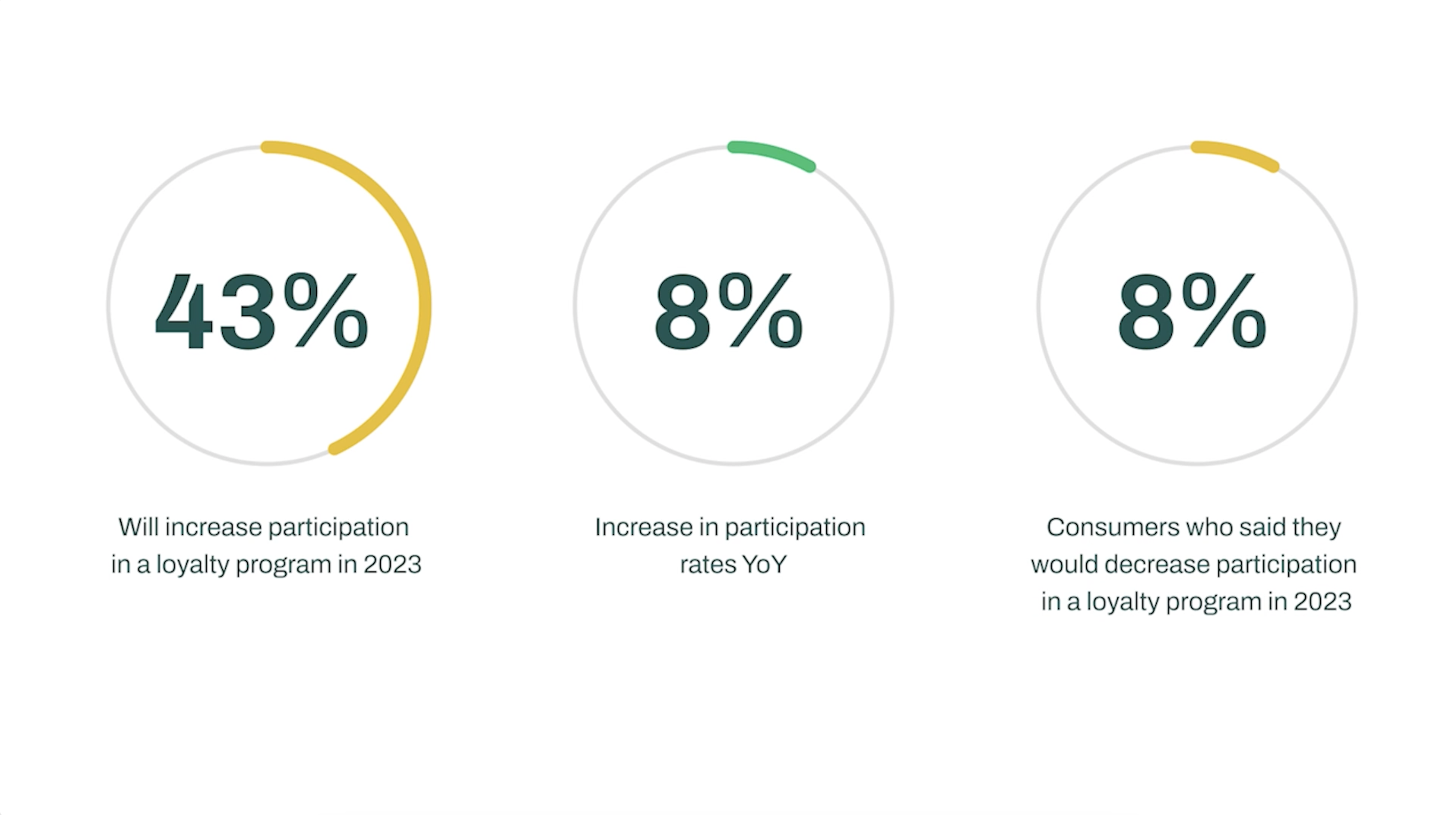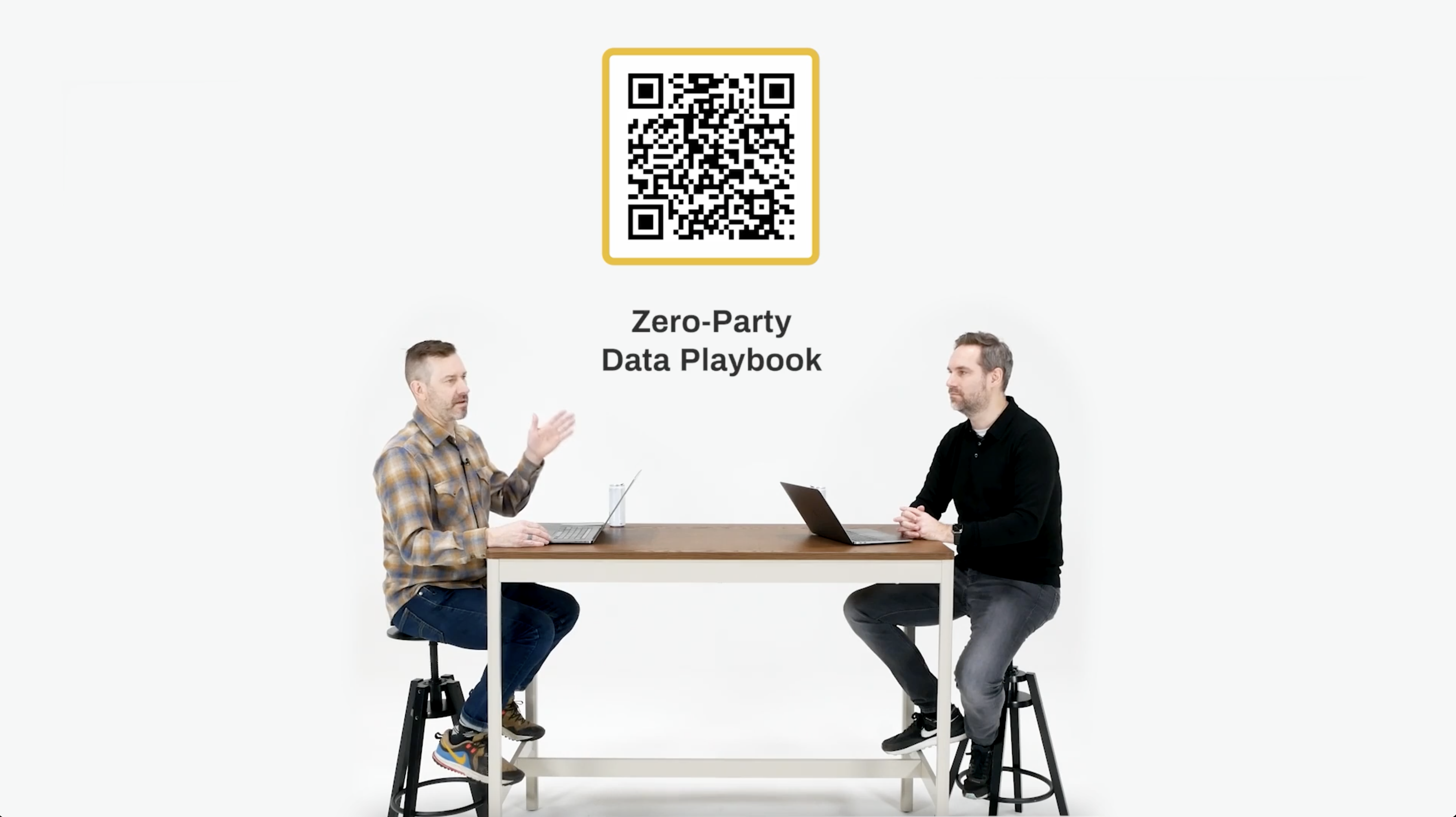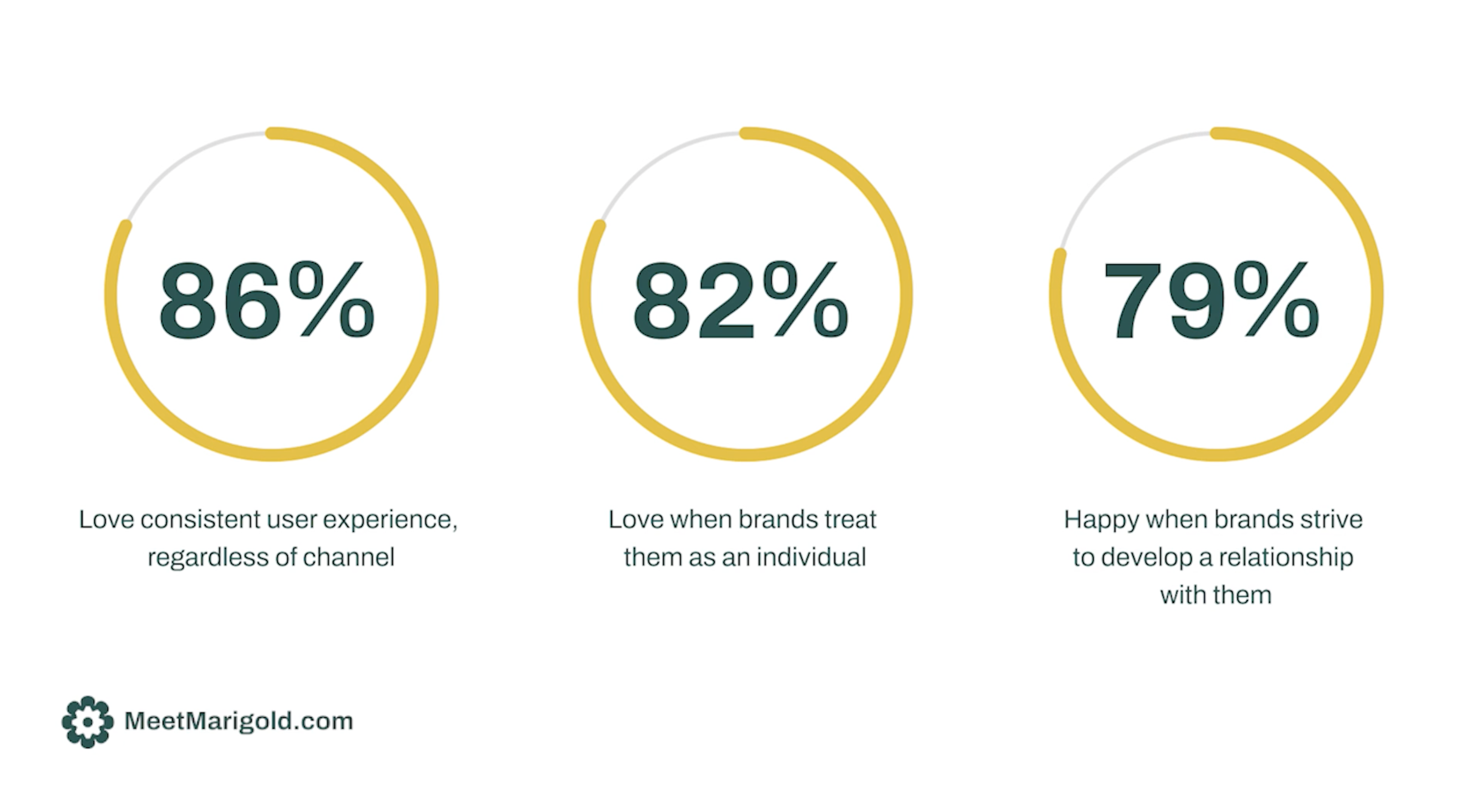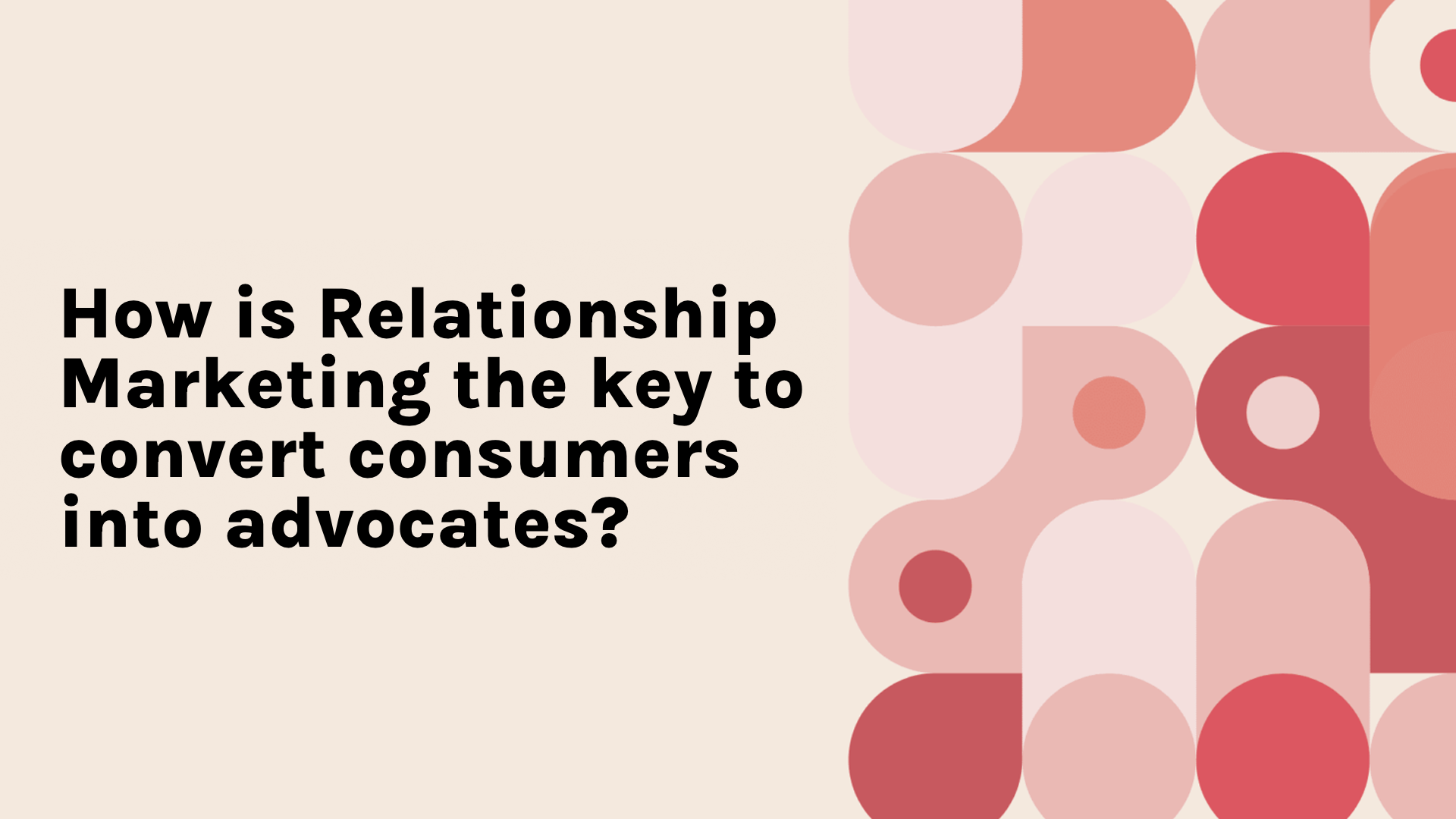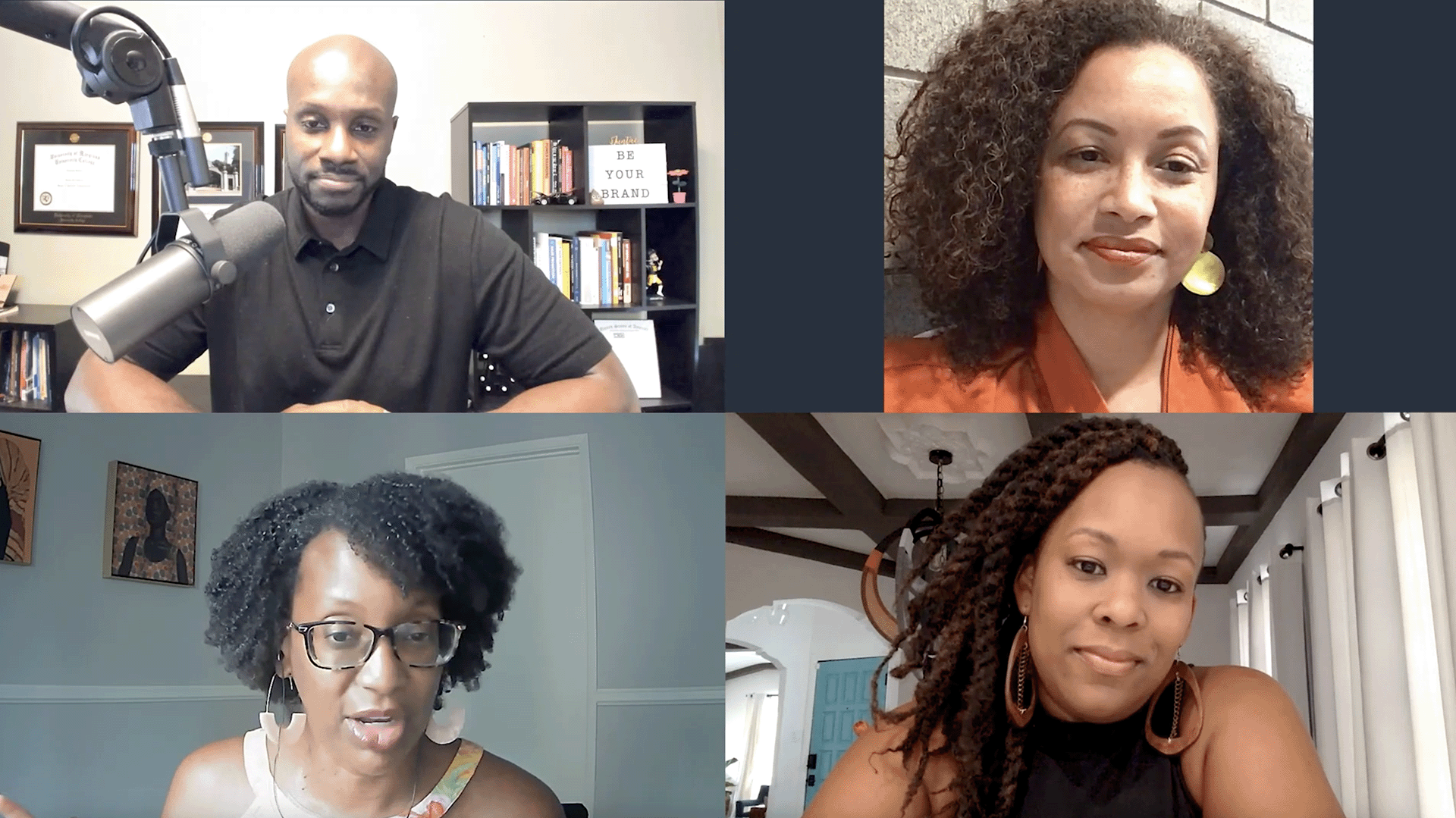Why Omnichannel Personalization is the Future of Marketing
- 0.5
- 1
- 1.25
- 1.5
- 1.75
- 2
Patrick Tripp: Welcome to our session on why omnichannel personalization is the future of marketing. I'm Patrick Tripp, SVP of product marketing at Cheetah Digital. Today's consumer is more empowered than ever before. They interact with your brand on multiple channels. They're unpredictable. They jump between awareness, consideration, evaluation, and purchase. They engage in digital channels and on your mobile app, and they expect you to be flexible and adaptive in your approach. The way to engage the modern consumer is through realtime, hyper personalized experiences. And that's what we'll be focused on today. We have a special guest from Omdia, Mila D'Antonio, the principal analyst for Omdia's business platform and applications team. Mila, how are you doing?
Mila D'Antonio: I'm doing well. Thank you, Patrick. It's a pleasure to be here today.
Patrick Tripp: Yeah. It's great to have you. And a little bit about her background as a part of the customer engagement team at Omdia, Mila covers technology and enables connected experiences across the enterprise with a specific interest in customer engagement platforms, CDPs, customer journey orchestration, and intelligent automation. And so we're going to get into this topic of omnichannel personalization today. Mila and I were on a panel recently at Enterprise Connect, and it was a great discussion around omnichannel personalization and how the future of journey orchestration is unfolding. So Mila, it would be great if you can kick us off with some of the key imperatives for delivering personalized omnichannel engagement.
Mila D'Antonio: Sure. I'd be happy to. And I'm excited to revisit this topic from Enterprise Connect. I think it's one that really resonates with everyone today, so I'm looking forward to sharing the trends and observations from our initial discussion on delivering that digital first omnichannel engagement, so let's get right to it. As we know, the events of this past year have really brought a lot of changes that are impacting all aspects of business from changing to remote work, to requiring digital tools, to engaging with customers in tailored and relevant ways. The future of this new reality is that it belongs to enterprises that can deliver an intelligent, contextual, frictionless and realtime, data driven human experience. However, the landscape looks different. Now we see increased traffic in online channels, older demographics who've moved online, consumers who have grown increasingly comfortable with using digital channels. And the way we work has changed dramatically, which also impacts the customer experience. These changes in consumers' habits have accelerated their expectations even more so today. Now they want effortless, frictionless interactions, digital fluidity, the ability to self serve, conversational interactions, and personalized experiences. How should enterprises respond? If they don't match consumers' expectations, it will negatively affect their perception of the brand, and that results in low inaudible, low customer satisfaction and ultimately customer attrition. Today, we will cover, like Patrick said earlier, five imperatives that we believe combine people, processes, and of course, the technology that will help accelerate your digital omnichannel experience. Becoming a data driven organization is essential in today's digital environment. As businesses embrace this digital shift post COVID, they face this new challenge of how to assimilate this huge volume of data to understand the customer on the other end. The problem has always been how to deliver the right message at the right time with the right consistency, through the right channel and the right context, so the customer has a decent experience, and interactions actually become conversational. The answer lies in becoming data driven. When centralized and unified customer data resides at the center of your organization and is integrated from multiple systems and channels and partners, and it is analyzed and acted upon, you have the foundation in place for becoming data drive. And at Omdia, we see interest across the board in data management investment initiatives. The percentages shown here are from our annual survey that I just cited, 65% said they had strategic or minor investments planned for customer data management. 59% said they had the same plans for data exchange and delivery. 61% for voice of the customer, 60% for realtime customer journey analytics, and 60% for speech analytics. I'm curious. What are some of the obstacles that you're seeing or hearing about when it comes to accessing data or leveraging data in the context of using it to deliver the realtime personalized engagement?
Patrick Tripp: Yeah. Great questions, Mila. And I think the access to data itself is just some of the biggest challenges we see for marketers, for brands, across the globe. Accessing data at the right cadence, at the right moments, that could create latency, not having the right data in the right place could create a sort of creepy factor or an invasive experience for consumers, where they haven't actually given permission to use the data that's being used to try to personalize experiences with them. So data privacy and ensuring that what we know about the consumer is really reflected, and we're not invading on their privacy. So being able to collect what consumers truly want to share with the brand is something we call zero party data.
Mila D'Antonio: Zero party data, I like that. We're seeing something similar here at Omdia with siloed and insufficient customer data, and even misalignment I'd say across departments. It really perpetuates the gaps in the customer experience. So I would say that zero party data, I guess to borrow your term, is likely the biggest cause of fragmented experiences, and it really misfire on delivering that omnichannel engagement because if employees don't have access to holistic customer data, they can't have meaningful interactions with customers. So I agree, providing access is definitely critical. So access to the data itself is an obstacle, but how have you seen the use of data evolve? Are companies now realizing the importance of becoming data driven and leveraging data to discover opportunities? What are you seeing there?
Patrick Tripp: Yeah. It all goes back to personalization. And I view personalization as a spectrum. We've really evolved beyond the past of dear name, insert product, or blasting messages in batch. And we need to think about things more in a realtime sense to be more nimble and more efficient in the way we engage, whether that's inbound or outbound, and ensure that we incorporate, like I was mentioning with zero party data, the real explicit insights that have been given to us by consumers, and leverage some implicit from that, but really trying to respect what we know about them in a more realtime fashion.
Mila D'Antonio: Yeah. I mean, I would agree. It's definitely moved beyond including name and the send field of emails. I think it's moved into an area where it's about making conversations more relevant and proactive even. So Patrick, can you share any interesting use cases regarding companies that have placed the customer journey data at the center of their organization, and have really made it accessible to employees, and how they achieve that?
Patrick Tripp: Yeah. That's a great question. And one of our great customers, Bloomin' Brands, which is a house of brands including Carrabba's, or Outback Steakhouse, or a number of others, have really taken a hard look at their data, especially in the COVID environment, and they've determined that in a digital transformation world, they had an opportunity to create a virtual brand called Tender Shack. They were able to get this virtual brand up and running within weeks, which is all things, chicken sandwiches and chicken strips. And they work along with Uber Eats and Door Dash, and it's been a tremendous success for them in a very short amount of time, allowing them to expand their reach and capture some of the attrition and the lost revenue that happened in the COVID timeframe. It was really about taking the data driven approach and looking at consumer behaviors and trying to adapt in a real difficult environment.
Mila D'Antonio: That brings us to our second imperative, platform adoption is the key to accelerating omnichannel engagement and connected customer journeys. Omdia believes platforms are essential to have an intelligent, scalable and connected experience. Customer engagement platforms in particular are something that I cover, I believe provide a faster route to delivering cohesive insights and enabling these omnichannel capabilities, especially when connected with operational systems to really close that loop. Here are some more statistics from Omdia's annual survey that signal what's to come in terms of platform investments. 61% of respondents said that they have strategic or minor investments planned for data science platforms. 62% intend to adopt unified platforms to omnichannel engagement. 64% said they'll invest in enterprise workforce collaboration. And 61% plan to invest in voice of the customer platforms. Also, as the stats on this slide reveal, enterprises have advanced their omnichannel efforts. We at Omdia saw year over year progress around advancement in omnichannel with 66% increase in those who said their omnichannel efforts were complete, and a 28% jump in those who said that their omnichannel efforts were advanced. So Patrick, what are you seeing in terms of your prospects and customers interest in platform adoption, as well as what kind of outcomes are they anticipating? And how has that changed post COVID?
Patrick Tripp: Yeah, definitely. What we're seeing at Cheetah Digital is more of a need for a self service marketing platform, really empowering marketers to get work done quickly, to be able to operate in an environment that they can control and manage without the heavy oversight of third parties. And more convenience and efficiency is really driving more success. And what we're also seeing is some experimentation around machine learning and being able to use that to better score and evaluate customers, so you can recommend the right segments, the right audiences, the right approaches, without all that manual intervention. So having the power to go in, manage journeys, manage programs, leverage some of the machine learning to intelligize the insights. And really, that platform approach is definitely very powerful, something we're seeing a lot of.
Mila D'Antonio: I agree with your point about AI. When AI and ML is I think embedded, especially in workflows, I think it really allows an enterprise to proactively enable and continually enhance the customer experience. So I think going forward, AI platforms, especially customer engagement platforms, is going to be table stakes. How does a business decide on a bill versus buy strategy when it comes to platforms?
Patrick Tripp: Yeah. Well, I think inherent to the concept of customer journeys, you're certainly wanting to be very creative there. You want to have a canvas in which to paint the right customer experience that matters most to your customers, and obviously take a lot of insight from them to be able to design that. But ultimately, you need to invest in software that's flexible and a platform and a journey design environment where you can go and actually do that build work. So maybe a different twist on the question, but you certainly want marketers and business people to be able to build the right experiences, but we also do need to invest in the technology that has all those tools, the right elements to help you create a sophisticated journey that might include multiple steps and follow ups. It might have some decisioning in there. It might have different channels, and certainly the ability to capture data and respond accordingly. So I feel like both of them are really important, and it can be woven together.
Mila D'Antonio: Can you offer any other key considerations when it comes to platform adoption?
Patrick Tripp: Yeah. I mean, I think look for a solution out there that you can manage without heavy IT involvement, something that's easy to test and learn, something that allows you to generate data, manage insights, act upon them, and be able to adapt to consumer behaviors. A lot of the platforms we see out there lack the ability to deliver it across channel element of messaging at scale. And having to manage all those integrations and stitching together various third party applications can be a very complex and costly process, including some latency and missing data and inaccuracy. So I think find a vendor that can help you through that process with the best practices, services, and support to get you successful along the way and with the right strategy.
Mila D'Antonio: I think that really plays nicely into our next imperative. Enterprise is most focused on connecting employees and transforming the customer experience. I think that really to succeed in delivering personalized omnichannel engagement, this really requires employee work and customer facing work to be intrinsically linked, especially as employees are remote and using digital tools. I think it starts with giving them this visibility into the customer insights and what they're doing along their journey, as well as the tools to practically act along those key steps, and then transforming the customer experience will naturally happen. I think the only way to sustain customer lifetime value these days is to really make customers loyal and profitable and to serve them efficiently. So to succeed, organizations really have to be aligned strategically and functionally around the customer. These stats here represent the responses from the Omdia enterprise insight survey that I cited earlier. They show companies do have intentions of connecting employees and CX with 70% who said they are making transparent and accessible across the enterprise, coupled with 76% who are transforming the customer experience, and 67% who are building the modern workplace. These are positive signs that the convergence is occurring. These are some stats from our digital workplace study, and as you can see, I just want to highlight one key area here, 25% have investments planned for new employee collaboration tools. So Patrick, what's the most important step when starting a journey orchestration initiative? What would you recommend as a good starting point?
Patrick Tripp: Yeah. There's a lot of different starting points we see with customers. But I think you ultimately want to be thinking big, but starting small. Think about quick actionable wins you can build upon and further automate over time. For example, you might want to start with something like a welcome journey series, automating all the onboarding steps for new clients and new purchases. You want people to then evolve to more progressive profiling, and even predictive programs, leveraging machine learning, cart abandonment, and even win back and retention. I think having templates or kind of blueprints in place to help you manage is key, so be able to take advantage of that and sort of slowly build upon that can make things very easy to adapt. And even leverage things like simulation to really help you test different scenarios with a degree of confidence before you go and actually deploy things live.
Mila D'Antonio: I like that concept, Patrick, of quick wins. I think that could easily start with listening to the customer, which surprisingly, many companies forget to do at the start. But really obtaining that quantitative and qualitative feedback from customers to determine the ways to take action, I think that could really provide insights into their expectations and how they might change over time, and how they could evolve. So I think it could also really signal some of their pain points and confirm what's working well along the journeys and what really needs to change. So I think that's another good starting point. So Patrick, we hear a lot about organizing employees around the customer to enable a customer focused culture. Do you see that happening? Can you provide any good tips?
Patrick Tripp: Yeah. That's a really great question. And the concept of journey orchestration and really improving that omnichannel experience really does require so many of the siloed functions to work together, so we're forcing function to get them to collaborate effectively, and they oftentimes disrupt orgs, and change titles and roles, but we see that as an evolution. One thing we do though to help our customers is really generate a real success model, where we align our strategic account teams to our customers to help them with best practices and roadmaps and health checks and quarterly business reviews to really help them get the most out of what they're doing with Cheetah and the relationship. We're trying to empower our customers in a more self service manner, helping them with training, and even learning in the product, to really help them on demand in the right moments, get the full value out of it, so a lot on the customer success side internally to help our customers.
Mila D'Antonio: Yeah. It sounds like you've really managed to operationalize your customer journeys, and successfully align them to employee processes, which is great. I think often achieving such operationalized customer centricity, so to speak, requires a top down approach from senior leaders to really bring this kind of cultural change that's required in support of these new models that you just described here. So I'm curious, using your own company, using Cheetah as sort of a benchmark. What are you seeing in terms of leaders who get the importance of digital CX? Is there a shift happening? Are you seeing the emergence of people being thrust into CXO roles?
Patrick Tripp: Yeah, customer experience is really the name of the game still. And it's so intertwined with worlds of marketing and even loyalty and retention and how we see things. We're certainly seeing a great degree of digital transformation, where, as I mentioned before, some of our brands and retail quick serve restaurants, travel, they're quickly reinventing their go to market approaches and their offerings. And Pizza is one of our quick serve restaurant customers. And they've gone completely digital in weeks right after being an in person only sort of custom pizza shop for the longest time, with a number of locations, but have had to really quickly pivot to becoming full online business. And this requires agility and flexibility, and titles like chief customer officer, we're seeing. Of course, CMOs are in the mix, but chief digital marketing experience professionals, we're seeing more and more of that in our accounts.
Mila D'Antonio: We're seeing more of it too, Patrick. And I agree that I think a CXO or someone in something called a chief customer officer role, it's really critical to moving that needle on digital transformation. We're seeing that the companies that succeed at rapidly innovating in this customer first, digital first model, typically have a leader like that in that role who oversees the customer experience and takes ownership of the processes and really spearheads initiatives, and is the one who is communicating the benefits throughout the organization. So I think that's going to be key, maybe in 2022 going forward and really establishing that role. Moving on to our next imperative, AI and automation must be part of intelligent customer journey orchestration. As more and more products get commoditized, CX would be this new battleground as brands really attempt to differentiate themselves. And I think that's where AI comes in to turn data into proactive and actionable insights. On this slide from that Omdia survey that I cited, when asked about planned investments in AI and machine learning, a combined 61% said they have strategic and minor investments planned for AI. So Patrick, what are you seeing in terms of the impact that AI has had on the overall customer experience over the past year?
Patrick Tripp: Yeah. This is a topic I'm very passionate about. And AI, artificial intelligence, is a very loaded term. And for us, it's really an umbrella term that has a number of specific tactics underneath, one being machine learning is becoming more and more mainstreaming, really help to automate, scale the personalization process. It's simply like being able to crunch through thousands of data points in millisecond to make the right decision is something you cannot replicate with a human. It's not something you can do manually. I think it's really powerful. A lot of our accounts are moving into this area and we provide some of the tools to help them do that.
Mila D'Antonio: Yeah. I think eventually, AI is going to become this new corporate competency that's really going to be crucial to the delivery of consistent, relevant CX, to enable that realtime decisioning. With that said, Patrick, AI used to be more of a buzzword just a few years ago. But now I've seen it core to the customer journey orchestration platforms and these customer engagement platforms, creating that intelligence layer and making the journeys actionable. Can you talk about AI and ML in the context of enabling proactive personalization and how that's evolved?
Patrick Tripp: Yeah, definitely. And we're seeing more democratization to the data. It's something we're calling citizen data scientists, which is really about creating a much more accessible business oriented approach, where there's a set of tools and tactics and models that you can easily grab as a marketer and take advantage of, from a inaudible models, whether it's clustering, or recommendations, or predictive marketing. Citizen data scientists as a concept and a strategy, even in a tool set is really helping marketers really get to that deeper level of personalization, and drive real business outcomes around acquiring customers more effectively, engaging consumers, retaining consumers and determining the probability of customers to leave or buy, and even driving customer lifetime value.
Mila D'Antonio: Yeah. And I believe these citizen data scientists that are emerging across all industries, I think it's the result of AI being embedded deeply into the business processes at the point where decisions are made by human beings. So now AI is really assisting them through data discovery and identifying key interactions, and therefore empowering these people. How do you get employees to see the value in AI adoption?
Patrick Tripp: Yeah, it's all about tangible business use cases. Like I mentioned earlier, propensity to churn, or propensity to buy, what can that get you as a business? Evaluating your best customers, and how can that help you drive retention? Automating the personalization process. Brands like Salling Group, which is in Denmark, driving significant lift through personalized coupons and recommendations and offers, all intelligently informed by machine learning models that are really helping deliver through a series of interactions, whether that's point of sale or mobile apps, really presenting the right content at the right moment. And that intelligence is really powerful.
Mila D'Antonio: Yeah, definitely powerful. I also think it comes down to showing the employees how AI can afford them the freedom to explore goals or learn new skillsets. So I think it's really important to communicate the benefits and the value of AI to them upfront, to really elicit that buy in. So moving on to our fifth and final imperative for building connected and digital first customer experiences, the fifth one is technology partnerships have become critical enablers of omnichannel. We discussed the importance of becoming data driven, of adopting a platform approach, adopting AI to make interactions actionable, and the importance of connected employees who are empowered and can act in the best interest of customers. But no company can do this all alone, no company or organization. Firms that embrace a future inaudible strategy have to rely on platforms. It's just the way forward to enable omnichannel journeys today. This slide here shows how enterprises are understanding the essential nature of forging those partnerships. These percentages are from a digital workplace study that Omdia recently conducted. When asked if the pandemic influenced their decisions to partner with information communication technology vendors, 70% said yes, with the number one reason being to provide the necessary technologies to support customers' digital journeys, followed by the offer of best of breed technologies, to understand the impact of digital on specific industries, and to help align business and IT strategy with better support. Patrick, why do you think partnerships are becoming increasingly essential as digital and omnichannel become these leading competitive indicators? What are some key considerations?
Patrick Tripp: Yeah. It's an important question. Omnichannel engagement taps into an ecosystem of channels, touch points, devices, people, and process. So while vendors can produce a centralized hub to orchestrate, you do need first mile data partnerships to help you get the right data at the right moment. Then last mile, execution strategy, whether that's point of sale, social, ads, or even offline channels. So integrations and APIs are definitely key, and best practices, and even subject matter expertise and things like vertical markets, like retail, restaurant, financial services. Kind of round out even a broader construct for partners.
Mila D'Antonio: Yeah. Those integrations are going to be key going forward for sure. That leads me to a final question. I'm just curious to get your final thoughts on what you think the next six months to a year would look like for companies who are embarking on these customer journey orchestration initiatives.
Patrick Tripp: Yeah. Journeys are evolving. Journeys have been around, but they're really ripe for transformation. They're ripe for reinvention. They're becoming much more omnichannel. They're becoming more digital, less linear. They need to be adaptive. They need to be more automated. They need to be realtime in nature, just as the consumer changes their habits. And they need to leverage some of the advanced analytics and machine learning we talked about for real intelligent decision making. Triggered realtime events as well, right? I see a lot of traditional journey solutions out there are very batch oriented, and they kind of create a standard approach, where you're looking at an audience and it's sort of one step at a time, and there's no going back or no adapting. But real triggered, realtime events are now key, being able to queue off of an important event, whether that's a cart abandonment, or a session abandonment, or a purchase that happens, or a consumer going into a store, or checking out, all those types of events can definitely create more of a triggered environment where you can respond intelligently in the right way. So journeys will continue to evolve, but it's exciting times for sure.
Mila D'Antonio: Yeah. I agree that I think those triggered events will rely a lot on automation. I think automation will come to the fore. And I think I'll also add that I also predict there will be this collective understanding of how the back office and front office should be unified to create what we call an adaptive enterprise that can really respond proactively to customers along this journey. So I think we're going to see the convergence of customer engagement platforms, with workforce management and employee collaboration platforms to really create this unified enterprise, all working toward that same goal, to elevate the customer experience.
Patrick Tripp: Thanks, Mila. It was great to talk with you again about these five key imperatives. To close out with a few comments, to drive more meaningful engagement, marketers need to move beyond traditional personalization solutions to deliver individual and contextual in moment experiences at scale. This modern customer journey approach requires a holistic view of customers across channels and touch points with an ability to act on timely, accurate and increasingly granular person level data. While 72% of consumers will only engage with personalized marketing, 86% are deeply concerned about their data privacy. Marketers struggle with this complexity. If done right, this enables brands to activate all the customer data available to deliver timely, relevant, and contextual experiences. Omnichannel personalization strategies should appear seamless, whether it's through email, mobile, wallet, SMS, websites, kiosks, social media, point of sale, or others, gives the customer consistent experience and engagement with your brand. And Cheetah's approach to omnichannel personalization allow you as marketers to orchestrate realtime interactions across all channels and touch points. We do this by delivering the next best experience, the next best journey, and the next best content. The results our customers are seeing are very powerful, including a 10 X more effective engagement versus traditional outbound campaigns, an increase of revenue by 17% or more through a value exchange, a five to eight X return on investment on marketing spend, and 10% lift in revenues. So if you want to learn more about our approach to next gen and omnichannel personalization, you can go to cheetahdigital. com. But Mila, it's been great to talk with you again. Thanks for attending. And we'll talk soon.
Mila D'Antonio: Pleasure talking with you too, Patrick. Thanks for having me. Thanks to Cheetah Digital.
DESCRIPTION
It's well known that omnichannel marketing is a must have, but Omdia principal analyst Mila D'Antonio shares the current stats and research that will help shape the heart of this strategy. Join Mila D'Antonio and Patrick Tripp from Cheetah Digital to discuss the future of customer engagement, and the impact that relevant, timely, and contextual customer journeys have on consumers.
Today's Guests

Mila D'Antonio



